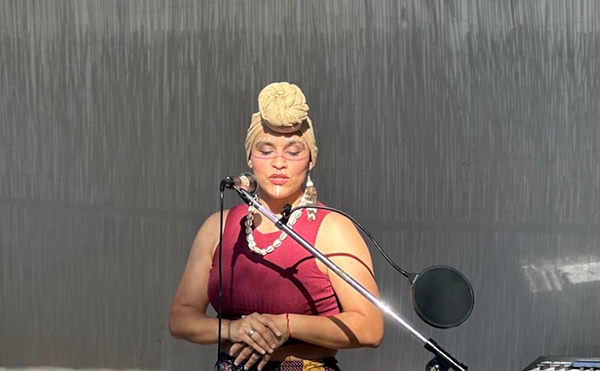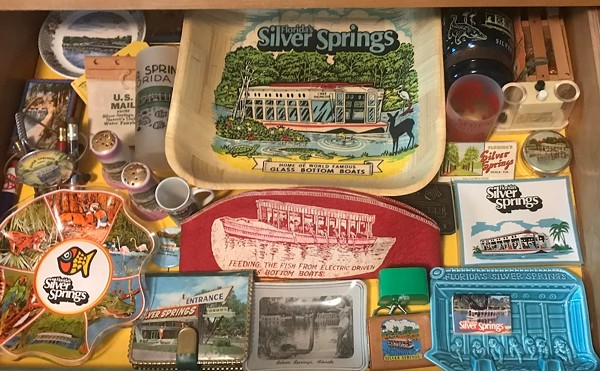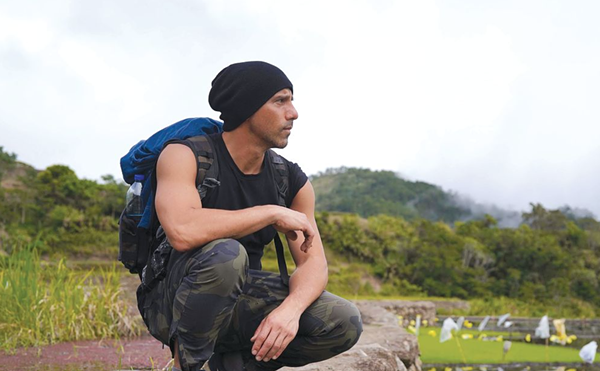There’s a certain point during one of his dinner parties when — if you’re lucky — Robert Drapkin, a clinical oncologist and, together with his wife, Chitranee, one of the foremost collectors of photography in Tampa Bay, will make a certain proposition. It’s usually after everyone has had a few drinks. “If you are really interested in seeing something very unusual,” Drapkin says, “come see our folk art collection.”
Inside a spare bedroom-turned-gallery, you’ll find one of the collector’s guilty pleasures — an array of nearly 100 religious folk art objects that Drapkin has amassed during regular trips to Guatemala over the past decade. There’s a weeping Jesus with strangely sensuous eyelashes; multiple dolls representing Maximon, an apocryphal brother of Christ who smokes a cigarette and wears a mustache; carvings of snakes, devils and doomed humans, and other oddities, including Ajitz, a red-faced shaman who bears a vague and unnerving resemblance to Captain Kangaroo.
The first time Drapkin showed off the collection, he was nervous. When people loved it, he grew bold. Then, sometime a few years ago, he semi-jokingly offered to loan the pieces to the Dunedin Fine Art Center for an exhibition.
That’s how Spirited, a showcase of about half of Drapkin’s Guatemalan folk art cache, came to be. Around 40 pieces offer a glimpse into the stylistic and iconographic diversity of religious artifacts made by artisans in the Latin American country, where a Spanish Catholic colonial past blends with ancient Mayan beliefs in curiously hybrid objects. Drapkin, who ventures to Guatemala four times a year to buy crafts for his wife’s import business, picks pieces that strike him as interesting, visually audacious and funny, in a macabre sort of way. That’s the spirit in which the exhibition at DFAC is intended — as a fun opportunity to look, rather than a scholarly evaluation of the art.
Some viewers may find this frustrating. Labels are limited to a single panel that gives a laconic overview; a catalogue on the subject of Guatemalan religious folk art (but not the specific pieces on view) is vastly more informative but puts the burden on visitors to flip through and draw their own conclusions. The upshot is that you can just hang out among unlabeled objects and let your eyes do the work. (Do you really need a curator’s text to intuit that a dancing skeleton might be lord of the underworld?) Without a conversation with Drapkin, though, I would have been clueless to decode some of the objects.
For example, a set of grinning masks represents Mexicans during an annual dance (the Dance of the Mexicans) performed in some Guatemalan villages; the masks, with their goofy grins and gold teeth, have been used to mock the Northerners since a 19th-century invasion. Likewise, a prone doll of Maximon may represent a particular incarnation of the mythological figure whose arms and legs were broken by other gods after he had sex with every man and woman in a particular village. Go figure. Recurring characters like Maximon, San Pascual (the skeleton) and the Mayan sorcerer Ajitz are easy enough to recognize, as are half a dozen Christs, including a bloody black-skinned one.
All of the objects, Drapkin says, are bona fide religious sculptures — the kind someone who prays to Jesus for healing but also checks in with the village shaman might appeal to for help.
A concurrent exhibition titled enCircled, focused on works of art that use circular forms to explore spirituality and abstraction, is a mixed bag. Works by David McKirdy including a minimalist circle of hand-formed cement balls and disorienting panels made of resin and aluminum, which suck viewer eyes into a moiré-patterned void, are solid. A mandala-inspired painting by Richard Entel, which incorporates subtle symbols with bold abstraction, offers food for thought. But a couple of elements are just off — Lisa Ariotti’s acrylic paintings of “amorphic pods” leave something to be desired both in terms of craft and complexity, and Jack Casey’s monochromatic paintings on panels shaped like giant circular brushstrokes in three dimensions strike me as sleek hotel art.
In the mix, however, are some truly remarkable pieces — mesmerizing concentric watercolors by Don Cooper, an Atlanta artist. His jumping-off point is the bindu, a dot recognized as the origination point of being in Hindu and Tantric traditions. After placing a small one — typically red — at the center of a sheet of handmade Indian paper, Cooper spends hours painting circles around it with layer upon layer of aqueous color. The results are post-Albersian mandalas, keenly attuned to the emotional and optical effects of hue, saturation, value and color proximity. A jade green one ringed in pink is as soothing as half a Xanax, while a swirl of ochre and sky blue pulsates with attractive force. If you’re not into their otherworldly lure, just enjoy them as sublime abstraction.
When asked how it feels to make the paintings, Cooper says: “I’ve tried since the ’60s to be a good meditator. This kind of painting to me is the better way to meditate.”


















